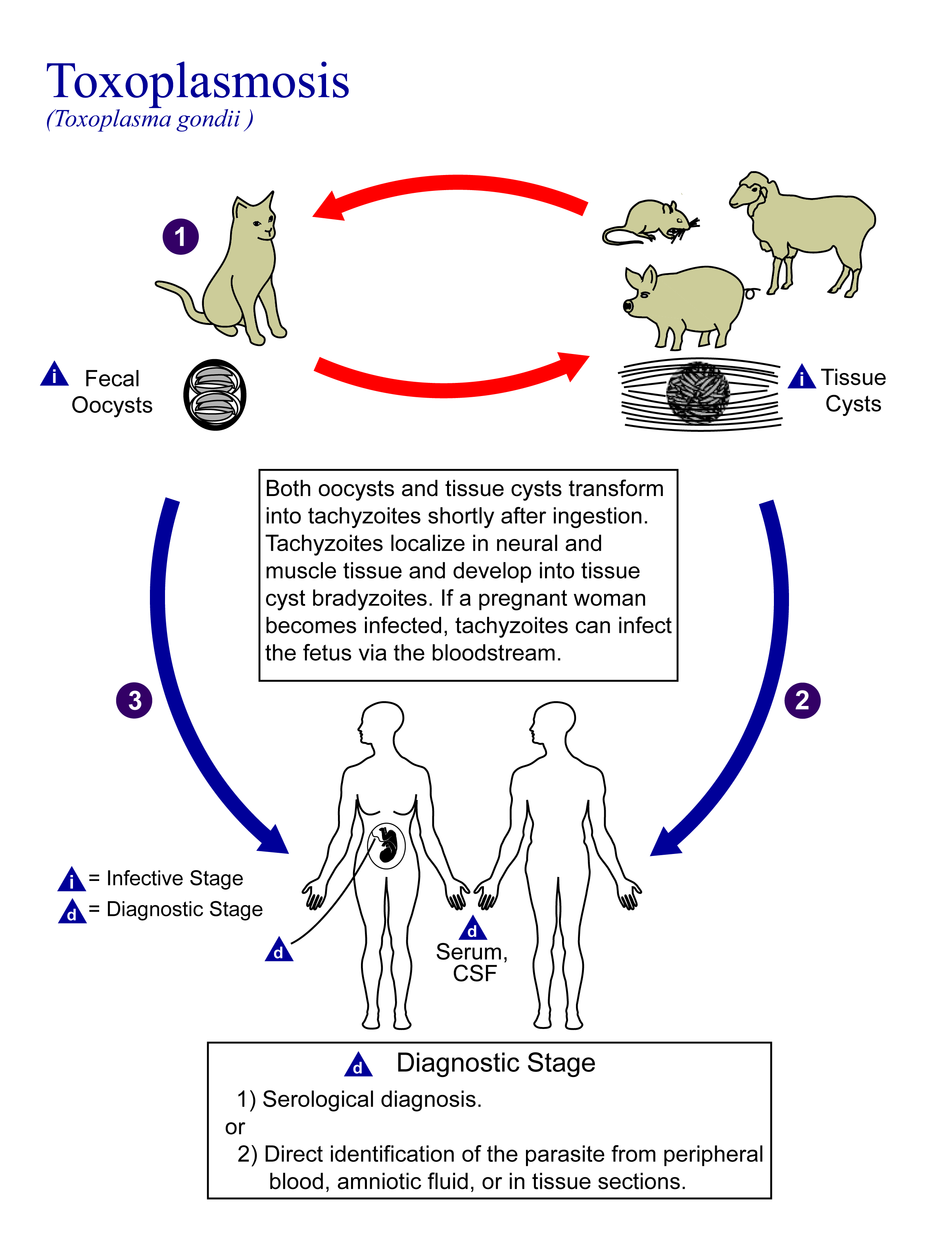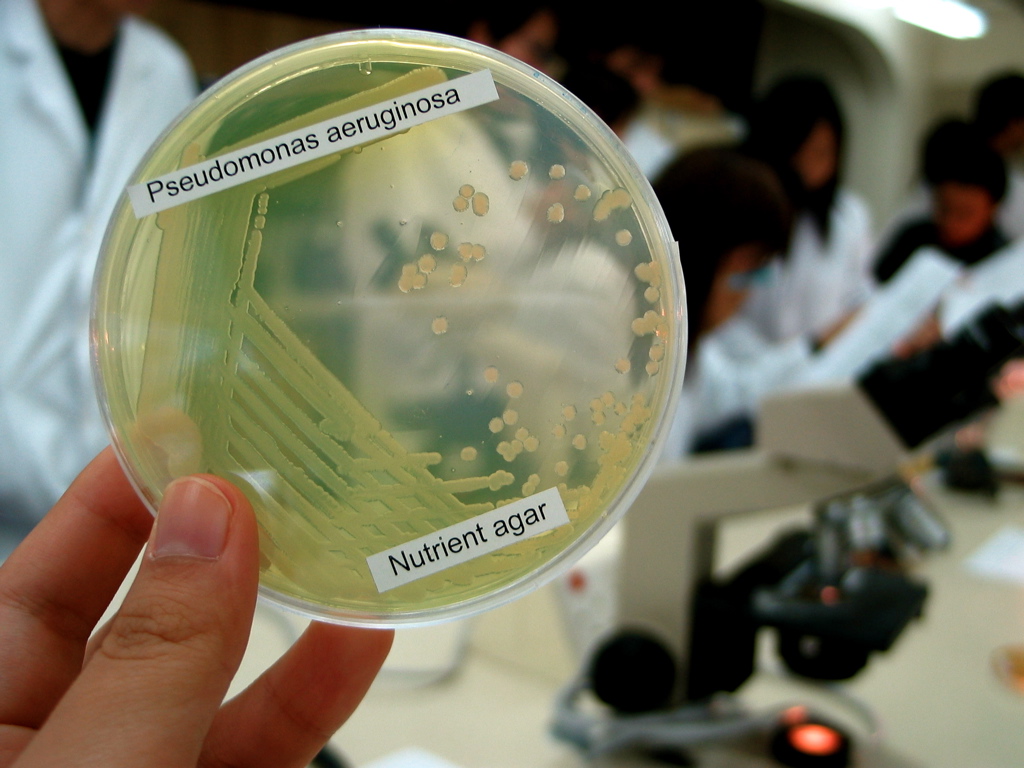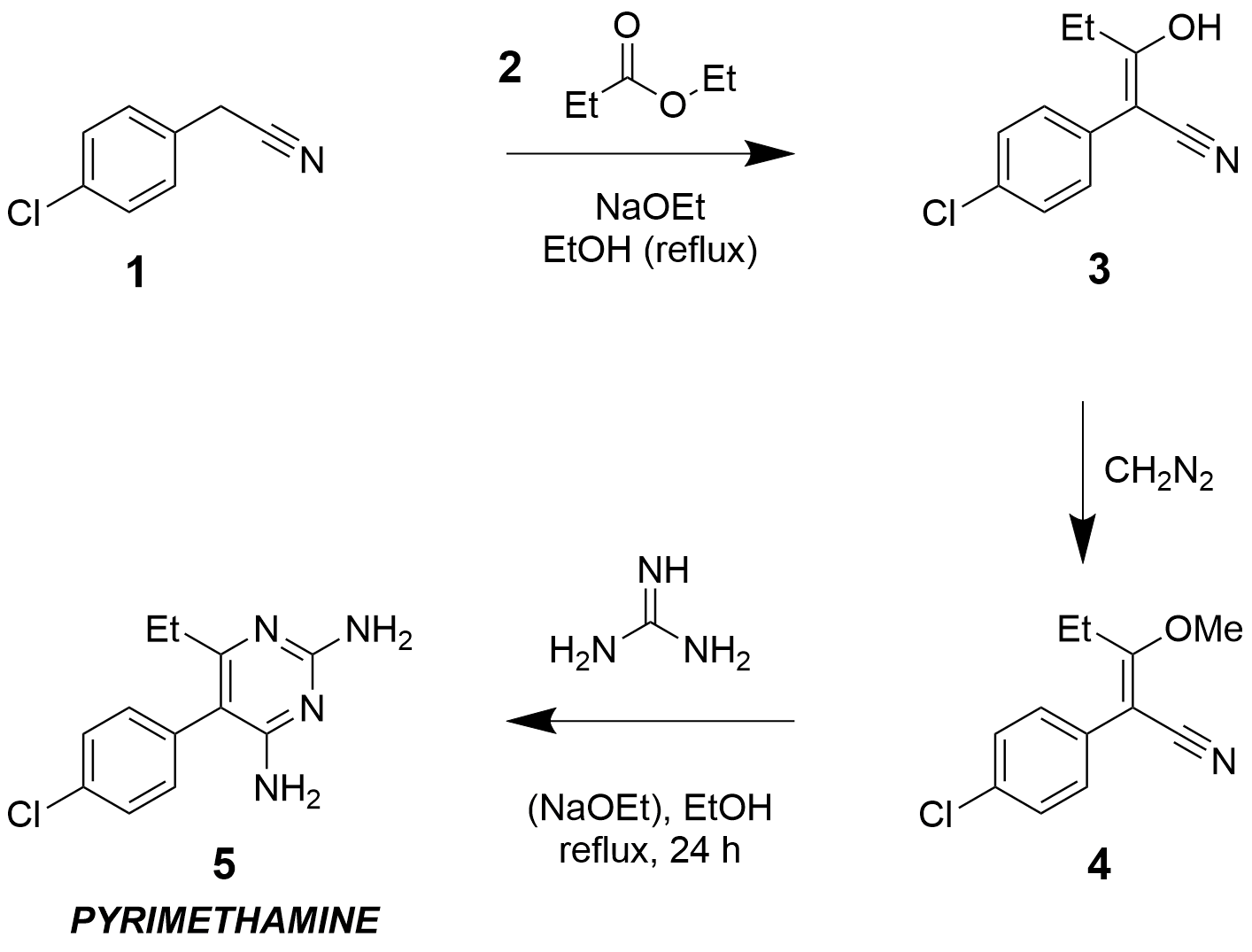|
Spiramycin
Spiramycin is a macrolide antibiotic and antiparasitic. It is used to treat toxoplasmosis and various other infections of soft tissues. Although used in Europe, Canada and Mexico, spiramycin is still considered an experimental drug in the United States, but can sometimes be obtained by special permission from the FDA for toxoplasmosis in the first trimester of pregnancy. Spiramycin has been used in Europe since the year 2000 under the trade name "Rovamycine", produced by Rhone-Poulenc Rorer, Sanofi and Famar Lyon, France and Eczacıbaşı İlaç, Turkey. It also goes under the name Rovamycine in Canada (distributed by OdanLaboratories), where it is mostly marketed to dentists for mouth infections. Spiramycin has been studied as a virulence inhibitor in ''Pseudomonas aeruginosa''. Medical uses Available forms It is available for parenteral and oral administration. Another treatment option (typically used after 16w gestation) are a combination of pyrimethamine and sulfadia ... [...More Info...] [...Related Items...] OR: [Wikipedia] [Google] [Baidu] |
Macrolide
Macrolides are a class of mostly natural products with a large macrocyclic lactone ring to which one or more deoxy sugars, usually cladinose and desosamine, may be attached. Macrolides belong to the polyketide class of natural products. Some macrolides have antibiotic or antifungal activity and are used as pharmaceutical drugs. Rapamycin is also a macrolide and was originally developed as an antifungal, but has since been used as an immunosuppressant drug and is being investigated as a potential longevity therapeutic. Macrolides are a diverse group with many members of very different properties: * Macrolides with 14-, 15-, or 16-membered rings and two attached sugar molecules are antibiotics that bind to bacterial ribosomes, the key representative being erythromycin. The term "macrolide antibiotics" tend to refer to just this class. * Some macrolides with very large (20+ membered) rings are immunosuppresants, the prototypical one being rapamycin. * Some 23-membered ... [...More Info...] [...Related Items...] OR: [Wikipedia] [Google] [Baidu] |
Toxoplasmosis
Toxoplasmosis is a parasitic disease caused by ''Toxoplasma gondii'', an apicomplexan. Infections with toxoplasmosis are associated with a variety of neuropsychiatric and behavioral conditions. Occasionally, people may have a few weeks or months of mild, flu-like illness such as muscle aches and tender lymph nodes. In a small number of people, eye problems may develop. In those with a Immunodeficiency, weakened immune system, severe symptoms such as seizures and poor coordination may occur. If a person becomes infected during pregnancy, a condition known as congenital toxoplasmosis may affect the child. Toxoplasmosis is usually spread by eating poorly cooked food that contains Microbial cyst, cysts, by exposure to infected cat feces, or from an infected woman to her baby during pregnancy. Rarely, the disease may be spread by blood transfusion or other organ transplant. It is not otherwise spread between people. The parasite is only known to reproduce sexually in the Felidae, ca ... [...More Info...] [...Related Items...] OR: [Wikipedia] [Google] [Baidu] |
Macrolide Antibiotics
Macrolides are a class of mostly natural products with a large macrocyclic lactone ring to which one or more deoxy sugars, usually cladinose and desosamine, may be attached. Macrolides belong to the polyketide class of natural products. Some macrolides have antibiotic or antifungal activity and are used as pharmaceutical drugs. Rapamycin is also a macrolide and was originally developed as an antifungal, but has since been used as an immunosuppressant drug and is being investigated as a potential longevity therapeutic. Macrolides are a diverse group with many members of very different properties: * Macrolides with 14-, 15-, or 16-membered rings and two attached sugar molecules are antibiotics that bind to bacterial ribosomes, the key representative being erythromycin. The term "macrolide antibiotics" tend to refer to just this class. * Some macrolides with very large (20+ membered) rings are immunosuppresants, the prototypical one being rapamycin. * Some 23-membered macrol ... [...More Info...] [...Related Items...] OR: [Wikipedia] [Google] [Baidu] |
Trade Name
A trade name, trading name, or business name is a pseudonym used by companies that do not operate under their registered company name. The term for this type of alternative name is fictitious business name. Registering the fictitious name with a relevant government body is often required. In a number of countries, the phrase "trading as" (abbreviated to t/a) is used to designate a trade name. In the United States, the phrase "doing business as" (abbreviated to DBA, dba, d.b.a., or d/b/a) is used,Pinkerton's, Inc. v. Superior Court'', 49 Cal. App. 4th 1342, 1348-49, 57 Cal. Rptr. 2d 356, 360 (1996) (collecting cases and explaining term of art "doing business as" (DBA)). among others, such as assumed business name or fictitious business name. In Canada, "operating as" (abbreviated to o/a) and "''trading as''" are used, although "''doing business as''" is also sometimes used. A company typically uses a trade name to conduct business using a simpler name rather than using their for ... [...More Info...] [...Related Items...] OR: [Wikipedia] [Google] [Baidu] |
Pseudomonas Aeruginosa
''Pseudomonas aeruginosa'' is a common Bacterial capsule, encapsulated, Gram-negative bacteria, Gram-negative, Aerobic organism, aerobic–facultative anaerobe, facultatively anaerobic, Bacillus (shape), rod-shaped bacteria, bacterium that can cause disease in plants and animals, including humans. A species of considerable medical importance, ''P. aeruginosa'' is a multiple drug resistance, multidrug resistant pathogen recognized for its ubiquity, its Intrinsic and extrinsic properties, intrinsically advanced antibiotic resistance mechanisms, and its association with serious illnesses – hospital-acquired infections such as ventilator-associated pneumonia and various sepsis syndromes. ''P. aeruginosa'' is able to selectively inhibit various antibiotics from penetrating its outer membrane'' ''– and has high resistance to several antibiotics. According to the World Health Organization ''P. aeruginosa'' poses one of the greatest threats to humans in terms of an ... [...More Info...] [...Related Items...] OR: [Wikipedia] [Google] [Baidu] |
Pyrimethamine
Pyrimethamine, sold under the brand name Daraprim among others, is a medication used with leucovorin (leucovorin is used to decrease side effects of pyrimethamine; it does not have intrinsic anti-parasitic activity) to treat the parasitic diseases toxoplasmosis and cystoisosporiasis. It is also used with dapsone as a second-line option to prevent Pneumocystis pneumonia, ''Pneumocystis jiroveci'' pneumonia in people with HIV/AIDS. It was previously used for malaria but is no longer recommended due to resistance. Pyrimethamine is oral administration, taken by mouth. Common side effects include gastrointestinal upset, severe allergic reactions, and bone marrow suppression. It should not be used by people with folate deficiency that has resulted in anemia. There is concern that it may increase the risk of cancer. While occasionally used in pregnancy it is unclear if pyrimethamine is safe for the baby. Pyrimethamine is classified as a folic acid antagonist. It works by inhibiting f ... [...More Info...] [...Related Items...] OR: [Wikipedia] [Google] [Baidu] |
Sulfadiazine
Sulfadiazine is an antibiotic. Used together with pyrimethamine, a dihydrofolate reductase inhibitor, it is the treatment of choice for toxoplasmosis, which is caused by a protozoan parasite. It is a second-line treatment for otitis media, prophylaxis of rheumatic fever, chancroid, chlamydia, and infections by ''Haemophilus influenzae''. It is also used as adjunct therapy for chloroquine-resistant malaria and several forms of bacterial meningitis. It is taken by mouth. Sulfadiazine is available in multiple generic tablets of 500 mg. For urinary tract infections, the usual dose is 4 to 6 grams daily in 3 to 6 divided doses. Common side effects include nausea, diarrhea, headache, fever, rash, depression, and pancreatitis. It should not be used in people who have severe liver problems, kidney problems, or porphyria. If used during pregnancy, it may increase the risk of kernicterus in the baby. While the company that makes it does not recommend use during breastfeeding, use ... [...More Info...] [...Related Items...] OR: [Wikipedia] [Google] [Baidu] |
Leucovorin
Folinic acid, also known as leucovorin, is a medication used to decrease the toxic effects of methotrexate and pyrimethamine. It is also used in combination with 5-fluorouracil to treat colorectal cancer and pancreatic cancer, may be used to treat folate deficiency that results in anemia, and methanol poisoning. It is taken by mouth, intramuscular, injection into a muscle, or intravenous, injection into a vein. Side effects may include trouble sleeping, allergic reactions, or fever. Use in pregnancy or breastfeeding is generally regarded as safe. When used for anemia it is recommended that pernicious anemia as a cause be ruled out first. Folinic acid is a form of folic acid that does not require activation by dihydrofolate reductase to be useful to the body. Folinic acid was first made in 1945. It is on the WHO Model List of Essential Medicines, World Health Organization's List of Essential Medicines. Medical use Folinic acid can be taken as a pill (orally) or injected i ... [...More Info...] [...Related Items...] OR: [Wikipedia] [Google] [Baidu] |
Secondary Alcohols
In chemistry, an alcohol (), is a type of organic compound that carries at least one hydroxyl () functional group bound to a saturated carbon atom. Alcohols range from the simple, like methanol and ethanol, to complex, like sugar alcohols and cholesterol. The presence of an OH group strongly modifies the properties of hydrocarbons, conferring hydrophilic (water-loving) properties. The OH group provides a site at which many reactions can occur. History The flammable nature of the exhalations of wine was already known to ancient natural philosophers such as Aristotle (384–322 BCE), Theophrastus (–287 BCE), and Pliny the Elder (23/24–79 CE). However, this did not immediately lead to the isolation of alcohol, even despite the development of more advanced distillation techniques in second- and third-century Roman Egypt. An important recognition, first found in one of the writings attributed to Jābir ibn Ḥayyān (ninth century CE), was that by adding salt to boiling win ... [...More Info...] [...Related Items...] OR: [Wikipedia] [Google] [Baidu] |
Aldehydes
In organic chemistry, an aldehyde () (lat. ''al''cohol ''dehyd''rogenatum, dehydrogenated alcohol) is an organic compound containing a functional group with the structure . The functional group itself (without the "R" side chain) can be referred to as an aldehyde but can also be classified as a formyl group. Aldehydes are a common motif in many chemicals important in technology and biology. Structure and bonding Aldehyde molecules have a central carbon atom that is connected by a double bond to oxygen, a single bond to hydrogen and another single bond to a third substituent, which is carbon or, in the case of formaldehyde, hydrogen. The central carbon is often described as being sp2- hybridized. The aldehyde group is somewhat polar. The bond length is about 120–122 picometers. Physical properties and characterization Aldehydes have properties that are diverse and that depend on the remainder of the molecule. Smaller aldehydes such as formaldehyde and acetaldehyde are soluble ... [...More Info...] [...Related Items...] OR: [Wikipedia] [Google] [Baidu] |
Dimethylamino Compounds
Dimethylamine is an organic compound with the formula (CH3)2NH. This secondary amine is a colorless, flammable gas with an ammonia-like odor. Dimethylamine is commonly encountered commercially as a solution in water at concentrations up to around 40%. An estimated 270,000 tons were produced in 2005. Structure and synthesis The molecule consists of a nitrogen atom with two methyl substituents and one hydrogen. Dimethylamine is a base (chemistry), weak base and the pKa of the ammonium CH3--CH3 is 10.73, a value above methylamine (10.64) and trimethylamine (9.79). Dimethylamine reacts with acids to form salts, such as dimethylamine hydrochloride, an odorless white solid with a melting point of 171.5 °C. Dimethylamine is produced by catalytic reaction of methanol and ammonia Ammonia is an inorganic chemical compound of nitrogen and hydrogen with the chemical formula, formula . A Binary compounds of hydrogen, stable binary hydride and the simplest pnictogen hydride, ammoni ... [...More Info...] [...Related Items...] OR: [Wikipedia] [Google] [Baidu] |




